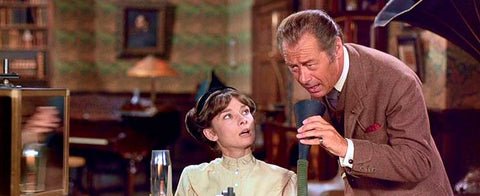Art of the Conversation Part 2 from our PERFECT ENGLISH iNBOX NEWSLETTER

The Art of Conversation
Part 2 in my 4 Part Series
The Art of Listening!
I believe that one of the key areas that is many times overlooked when learning English in the U.S. is NON-VERBAL COMMUNICATION. The signals and affirmations in non-verbal communication serve to indicate feeling, meaning and understanding. That is why facial expressions, voice, body language and movement are vital components to having a successful conversation that easily flows.
So your job as the listener... it’s all about your FEEDBACK!
In turn, your responses will make conversations flow because you will genuinely want to know about the other person. You will then be able to contribute to the conversation from your own perspective and experiences.
Make Some Noise
As the “Listener," your verbal affirmations add so much to the conversation. Think about it. If no one received responses to what they were saying, it would feel very much like speaking to yourself. I'm afraid it would make for a very lonely conversation.
25 Small yet Expressive Exclamations
- Ah expresses relief or delight (generally, pronounced with a long a).
- Aw expressive of disappointment or when drawn out, of sympathy or adoration.
- Ha expresses joy or surprise.
- Ha-ha communicates laughter.
- Hm suggests curiosity, confusion or skepticism.
- Huh is a sign of disbelief, confusion, or surprise, or, as a question a request to repeat.
- Hurrah (also hoorah, hooray, and hurray) is an exclamation of triumph or happiness.
- Ick signals disgust.
- Mm-hmm is an affirmative or corroborating response.
- Mmm conveys palatable pleasure.
- Oh is among the most versatile of interjections. Expresses comprehension or acknowledgment, or as a response to a pain or pleasure or with a question mark as a request for verification.
- Oh-oh is a response to something that will have negative repercussions.
- Ooh conveys interest or admiration.
- Ooh-la-la is a response to an attempt to impress or gently mocks pretension or finery.
- Oops calls attention to an error or fault.
- Ouch or owwww signals pain or is a response to a harsh word or action.
- Ugh is an exclamation of disgust.
- Uh-huh indicates affirmation or agreement.
- Uh-oh signals concern or dismay.
- Whee is an exclamation of excitement or delight.
- Wow expresses surprise.
- Yay is a congratulatory exclamation.
- Yikes is an expression of fear or concern.
- Yuck signals disgust.
- Yum or yummy, is a response to the taste of something delicious.
Phew! (Communicates fatigue), we made it through Part 2. I want to mention that there are many more interjections than what I have listed. I felt that these are often said by the listener as much as by the speaker. In a later letter, I will include those most often used by the speaker in the conversation.
















